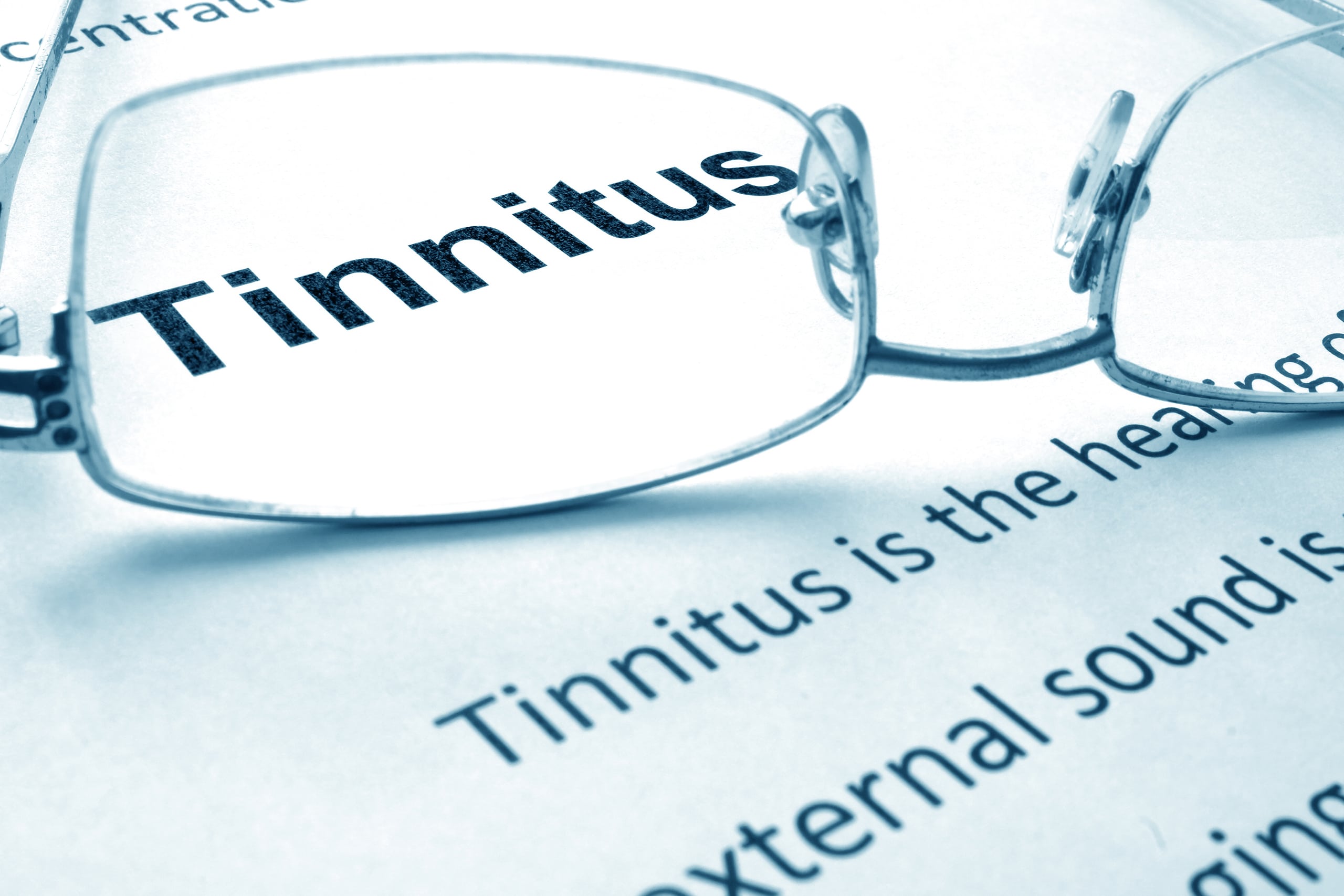Ask Our Experts
Treating Tinnitus

Most people rely on silence to find focus, relax, or sleep. Individuals with tinnitus hear a constant ringing. For some, it may be a mild distraction, but others find it debilitating. For 2.4% of the adult population, severe tinnitus can cause a high level of psychological and emotional distress including anxiety, depression, poor concentration, and sleep disorders. Tinnitus sufferers have a ten-fold higher risk of suicide compared to the average person.1
What is Tinnitus?
Tinnitus is the perception of sound that can manifest as buzzing, ringing, hissing, whistling, pulsating, swooshing, or clicking when no actual external noise source is present. The sound can be constant or intermittent. The sound of tinnitus may also vary in pitch from a barely noticeable low to a high frequency so loud that it can interfere with the ability to concentrate or to hear external sounds.
Individuals with tinnitus often feel isolated and alone. And yet, according to the American Tinnitus Association, an estimated 50 million people in the United States suffer from chronic tinnitus.2 Of those, only about 50.6% had discussed their problem with a physician,3 and for almost 25%, the tinnitus is severe enough to interfere with daily activity.
What Causes Tinnitus?
In most cases, tinnitus is caused by damage to cells found within the inner ear that send signals to the brain that produce perceived sound. Damage to these cells may be caused by normal aging, general hearing loss, infection, medication, prolonged exposure to loud noise, ear canal obstruction, temporomandibular joint dysfunction, or musculoskeletal head or neck injuries. Certain diseases (e.g., multiple sclerosis, tumors of the inner ear) can also contribute to tinnitus.
Types of Tinnitus
In general, there are two types of tinnitus: 1) Subjective tinnitus, where the noise is perceived only by the specific patient, and 2) Objective tinnitus, where the noise is perceived by other people as well. In objective tinnitus, these sounds are produced by the body’s circulatory system (blood flow) or somatic system (musculoskeletal movement).
Somatosensory tinnitus is an underdiagnosed subtype of tinnitus where the complex network of sensory and nerve cells responds to changes from movement, pressure, touch, temperature, or pain from the cervical spine and jaw area to change an individual’s perception of sound. The signals become dysregulated on their way to a specific auditory center in the brain and are altered, causing excitability in the nerves that are responsible for hearing. There are many theories about how this altered neurophysiologic pathway forms, but it is evident that myofascial trigger points or areas of muscular pain can contribute to the cause.4 This type of tinnitus has a multifactorial origin with a host of potential influencing factors and requires extensive and specific expertise to diagnose and treat correctly.5,6
Treatment options for Tinnitus
Although there is no known cure for tinnitus, there are treatments that may reduce its intensity and burden. In a condition were a significant majority (84.8%) of patients have never tried any form of treatment, there are options that can significantly improve overall health and quality of life.3 Treatment options include:
- Sound-based therapies, such as hearing aids or masking devices. Hearing aids amplify the volume of external noise to make tinnitus more obscure, while masking devices (e.g., listening to music or white noise) masks the sound of tinnitus making it more difficult to consciously perceive, helping the brain focus on external sounds.
- Cognitive behavioral therapy utilizes coping strategies, distraction skills, and relaxation techniques to manage an individual’s psychological response to tinnitus. Tinnitus retraining therapy retrains the brain to view the tinnitus as normal background sounds rather than a distracting problem. Biofeedback therapy teaches individuals to control certain body functions, such as heart rate, breathing, and muscle tension that are associated with the stress and anxiety surrounding tinnitus.
- Pharmacotherapy may be used to address any underlying stress, anxiety, and mood changes associated with tinnitus. Nerve blocks may also be used to dampen the misfiring of signals and regulate the blood flow around the ear to address any obstruction or injury that may be contributing to the tinnitus.
- Other types of treatment that have been studied but have yet been conclusive in their beneficial outcome include electrical stimulation, herbs, vitamins or minerals, manual therapy, myofascial release, cervical physical therapy, acupuncture, and dry needling.
Every case of tinnitus is unique. In this case study, we tell the story of Neil, a healthy 37-year-old who has been suffering from somatosensory tinnitus since 2018. After many failed attempts to manage his tinnitus, Neil finally experienced some relief with dry needling, a technique in which a fine needle is used to penetrate the skin and target trigger points along the cervical spine. Case reports show that dry needling relaxes muscle tightness, increases blood flow, and reduces pain and inflammation, which can improve symptoms of somatosensory tinnitus.7,8 Based on this early success, Neil is now considering travelling to Brazil to meet with a world-leading expert that we identified who specializes in a specific dry needling technique for somatosensory tinnitus.
* Always seek the advice of your physician or other qualified health provider with any questions you may have regarding a medical condition.
References
1 Altissimi, G. et al. When alarm bells ring: emergency tinnitus. Eur Rev Med Pharmacol Sci 20, 2955-2973 (2016).
2 Shargorodsky, J., Curhan, G. C. & Farwell, W. R. Prevalence and characteristics of tinnitus among US adults. Am J Med 123, 711-718, doi:10.1016/j.amjmed.2010.02.015 (2010).
3 Bhatt, J. M., Lin, H. W. & Bhattacharyya, N. Prevalence, Severity, Exposures, and Treatment Patterns of Tinnitus in the United States. JAMA Otolaryngol Head Neck Surg 142, 959-965, doi:10.1001/jamaoto.2016.1700 (2016).
4 Sanchez, T. G. & Rocha, C. B. Diagnosis and management of somatosensory tinnitus: review article. Clinics (Sao Paulo) 66, 1089-1094, doi:10.1590/s1807-59322011000600028 (2011).
5 Michiels, S. et al. Somatosensory Tinnitus Diagnosis: Diagnostic Value of Existing Criteria. Ear Hear 43, 143-149, doi:10.1097/aud.0000000000001105 (2021).
6 Ralli, M. et al. Somatosensory tinnitus: Current evidence and future perspectives. J Int Med Res 45, 933-947, doi:10.1177/0300060517707673 (2017).
7 Womack, A., Butts, R. & Dunning, J. Dry needling as a novel intervention for cervicogenic somatosensory tinnitus: a case study. Physiother Theory Pract, 1-9, doi:10.1080/09593985.2020.1825579 (2020).
8 Campagna, C. A., Anauate, J., Vasconœlos, L. G. E. & Oiticica, J. Effectiveness of Dry Needling in Bothersome Chronic Tinnitus in Patients with Myofascial Trigger Points. Int Arch Otorhinolaryngol.

